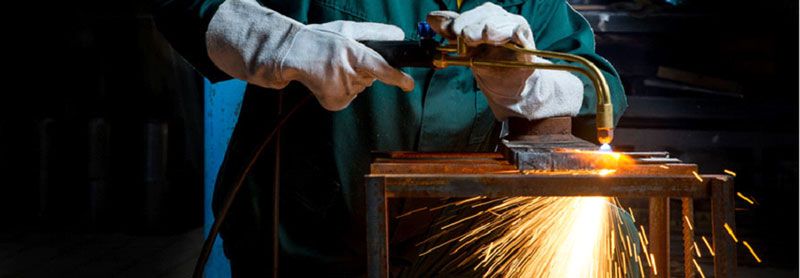Shop Now
- Welding Consumables
- Welding Torches & Torch Spares
- Welding Machines
- Plasma & Cutting Machines
- Welding Machine Spare Parts & Accessories
- Welding Fume Extraction Equipment
- Gas Welding Equipment
- Welding Abrasives
-
Welding Safety Equipment
- Welding Helmets
-
Welding Helmet Spares
- Speedglas Spares
- Betaweld Spares
- Cigweld Spare Parts & Accessories
- Flip Front Helmet Spares
- Jackson Spares & Accessories
- Lincoln Electric Spare Parts & Accessories
- Miller Spares & Accessories
- RPB Spares
- Servore Spares
- Unimig Spare Parts & Accessories
- Weldclass Spares & Accessories
- Miscellaneous Helmet Lens
- Welding Gloves
- Protective Workwear
- Welding Blankets
- Welding Screens & Curtains
- Ear Protection
- Eye Protection
- Face Protection
- Hand Protection
- Head Protection
- Respiratory Protection
- Sun Protection
- Hydration Products
- Fire Blankets
- Prestart Books
- Safety Signage
- Safety Tags
- Welding Accessories
- Pipe Welding Equipment
-
Cutting & Drilling
- Bandsaws
- Bandsaw Blades
- Bandsaw Accessories
- Coldsaws
- Core Drills & Accessories
- Cutting & Milling Blades
- Diamond Blades
- Drill Bits
- Holesaws
- Magnetic Base Drills
- Metal Working Lubricants
- Pipe Bevelling
- Pipe Cutting Equipment
- Pipe Tee Pulling Kits
- Pipe Threading Machines
- Plasma Table Water Additives
- Punching Machines
- Welding Merchandise
- Gift Cards
- Clearances
-
Hire
- Hire Equipment
- Hire Heating Equipment
- Hire Degausing Equipment
- Hire a Welding Positioner
- Hire a Turning Roller
- Hire a Diesel Welder
- Hire a Wirefeeder
- Hire a Multi-Process Welder
- Hire Accessories
- Hire a MIG Welder
- Hire a TIG Welder
- Hire a Stick Welder
- Hire a Plasma Cutter
- Hire a Weld Cleaner
- Hire a Stud Welder
Using Oxy-Fuel Cutting for Scrap Metals
For well over a decade, Alphaweld has been supplying welding professionals and enthusiasts across Australia with premium welding tools and equipment. Our team of experts boast over 50 years of combined technical knowledge and we make it our business to stay on top of all the latest developments in welding tools and processes to bring you the most innovative solutions available, anywhere on the market. At Alphaweld, we’re not just about moving products; we share expert advice offering our customers un-matched levels of service.
In this blog, we discuss the tools and techniques involved in oxy-fuel cutting, with particular focus on its use with scrap metal.
How Does Oxy-Fuel Cutting Work?
Oxy-fuel cutting has gained popularity as an accurate and cost-effective method of cutting low carbon steel. The cutting mechanism is created by a chemical reaction between pure oxygen and steel that creates iron oxide - basically, an acceleration of the process that creates rust.
The first step in oxy-fuel cutting is to use the cutting torch to preheat the steel to ignition point, a temperature of around 960° depending on the type of alloy being used. At this point, the steel has lost its protective properties and is ready for cutting. To create the cut, a stream of pure oxygen at very high pressure is directed through the nozzle at the pre-heated steel and liquifies it through an exothermic reaction.
The pressurised air stream blows the liquid slag out of the surrounding un-oxidised steel, leaving a cavity. The operator moves the torch at a steady speed across the surface of the workpiece, creating a continuous exothermic reaction to extend the cavity into a cut. Alphaweld offers a variety of standard and high-flow oxygen regulators to achieve the optimal oxygen stream.
What Materials Is Oxy-Fuel Cutting Suitable for?
Oxy-fuel cutting can only be used on metals which oxides have a lower melting point than the base metal. If the melting point of the oxide is equal to or higher than the base metal, the material will form a protective crust that stops the oxidation process. This makes oxy-fuel cutting effective for cutting low carbon and low alloy steels, and is often used for cutting low alloy scrap metal.
Tips for Oxy-Fuel Cutting
Once mastered, oxy-fuel cutting can be reliably used to create clean, high-quality cuts. However, it is a delicate operation that takes a long time and plenty of practice to perfect, and even then remains a time-consuming process.
Creating consistent, high-quality cuts in thick-walled material is particularly difficult. The challenge in this instance is ensuring that the deepest part of the metal is preheated to the correct temperature. If heated for too long, the oxygen stream will create excessive spatter when it displaces the liquified steel. If not adequately heated, the outer wall will not reach ignition temperature and the exothermic reaction will not occur. To combat this, operators sometimes use an automated process called proportional piercing that creates a regulated oxygen flow to control the exothermic reaction.
Contact Alphaweld Today
The team at Alphaweld are always ready to share their expertise and help you find the best solution for your welding challenges. Get in touch with Alphaweld today by calling (08) 9456 8000 or submit an enquiry online.


